

Damion Smy
Hyundai i30 N TCR celebrates 10 years of ‘N’ with Gran Turismo 7 debut
10 Hours Ago

News Editor
A substantial mid-cycle enhancement could give the 2021 Hyundai Kona enough of a boost to topple the Mitsubishi ASX as Australia’s favourite small SUV.
In addition to revised styling, the Kona has two new powertrains and a raft of new features.
The updated Kona is on sale now, with the updated Kona Electric due in March and the Kona N debuting later this year. CarExpert understands the N will appear locally around mid-year.
The Kona’s range structure has changed markedly.
While the 2020 Kona offered a choice of two powertrains across all four trim levels, the 2021 Kona now limits the more powerful of the two to the new N Line and N Line Premium.
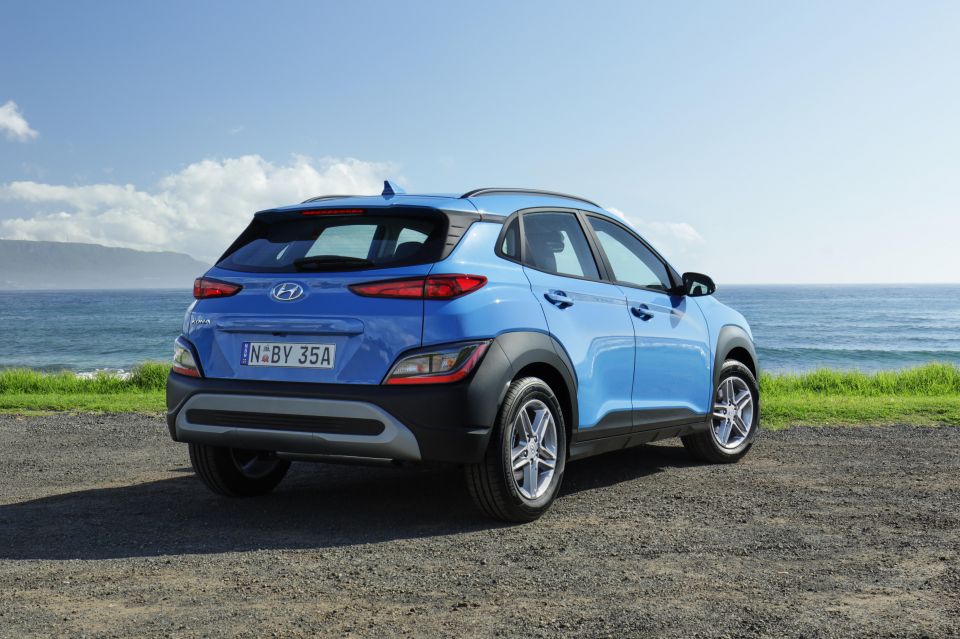
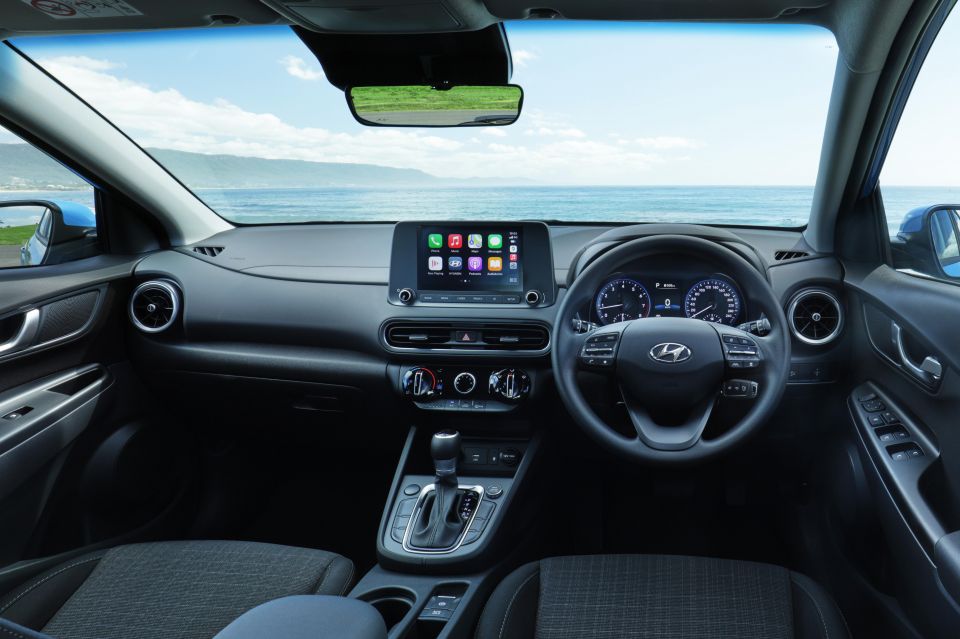
Powering the base Kona – now simply called Kona – and the Active, Elite, and Highlander is a naturally-aspirated SmartStream 2.0-litre four-cylinder engine producing 110kW of power and 180Nm of torque.
It produces 20Nm more torque than last year’s model, though power is unchanged.
The six-speed automatic transmission has been replaced with a continuously-variable transmission and all 2.0-litre Kona models remain front-wheel drive.
It uses 6.2L/100km on the combined cycle, down from 7.2L/100km in last year’s model.
The rear suspension continues to use a torsion-beam rear axle, while the suspension tune is unchanged.
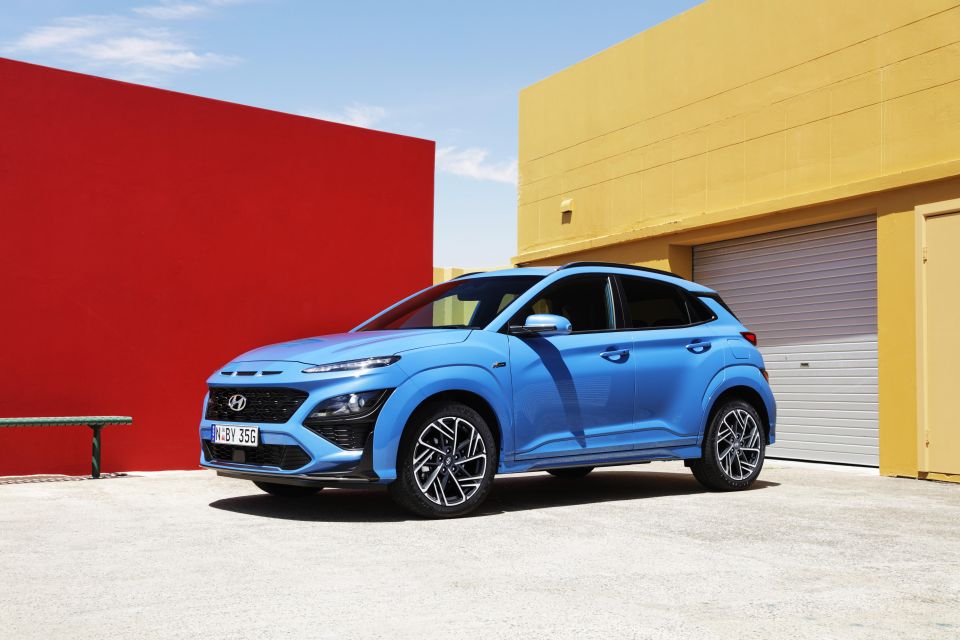
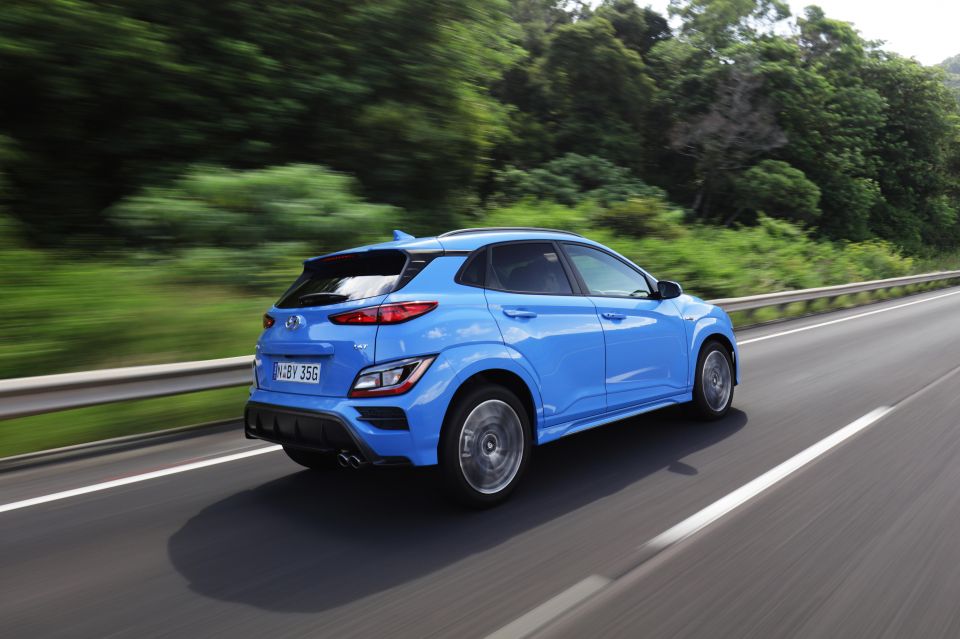
The new all-wheel drive N Line and N Line Premium feature a turbocharged 1.6-litre four-cylinder engine, producing 146kW of power and 265Nm of torque, up 16kW from last year’s turbo 1.6-litre.
Torque is unchanged, while a seven-speed dual-clutch automatic transmission remains standard. Fuel consumption has increased by 0.2L/100km to 6.9L/100km.
The N Line and N Line Premium feature a sportier suspension tune and a multi-link rear suspension plus larger 305mm ventilated front disc rotors (up from 280mm).
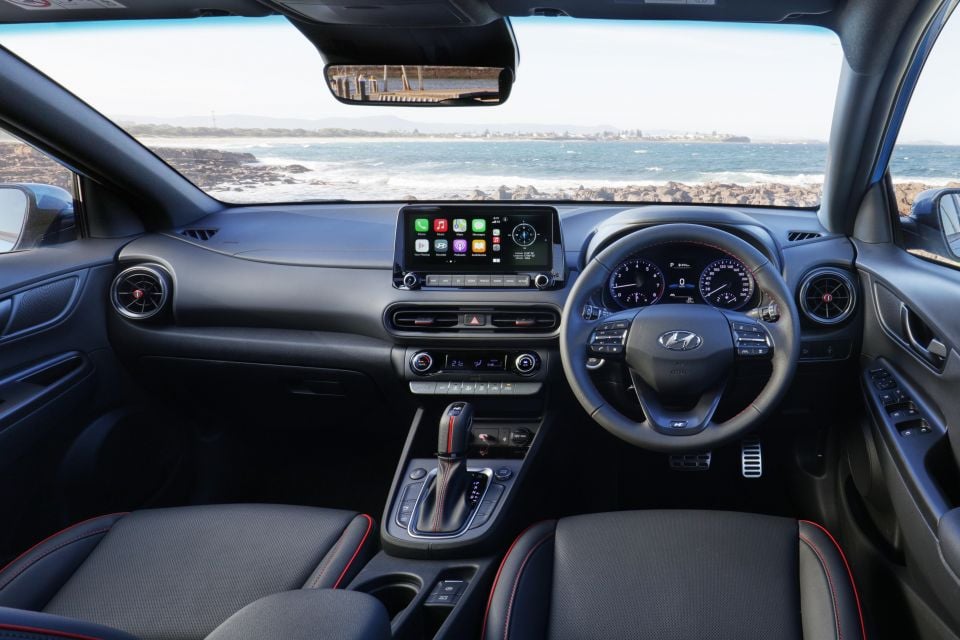
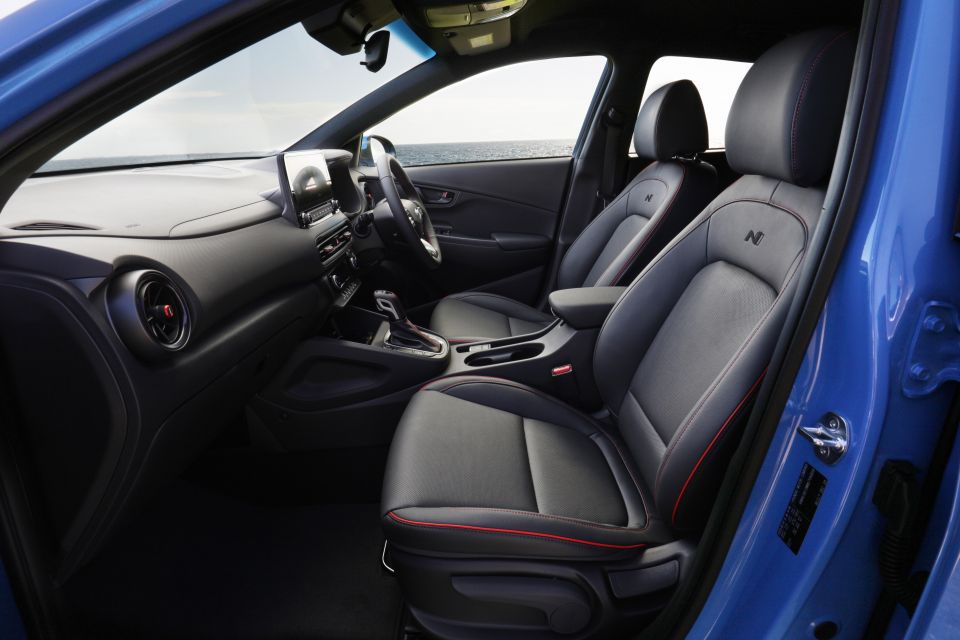
The N Line models have a sportier look inside and out, including unique front and rear bumpers.
Inside, there are sports seats, alloy pedals, and red stitching elements and trim inserts.
The base price has risen by $2300 to $26,600 before on-road costs, while other models see increases of between $1000 and $2140.
Hyundai has added extra equipment, with the base Kona now featuring wireless phone charging, an electronic parking brake, adaptive cruise control with stop/go, and a larger 8.0-inch touchscreen infotainment system with wireless Apple CarPlay and Android Auto.
The 2021 Kona is available with the latest of Hyundai’s safety technology, including blind-spot assist, rear cross-traffic assist and safe exit warning in trim levels Elite and up.
The autonomous emergency braking system on all models has been upgraded to Hyundai’s Forward Collision-Avoidance Assist, which includes pedestrian and cyclist detection and relies on both radar and the front camera.
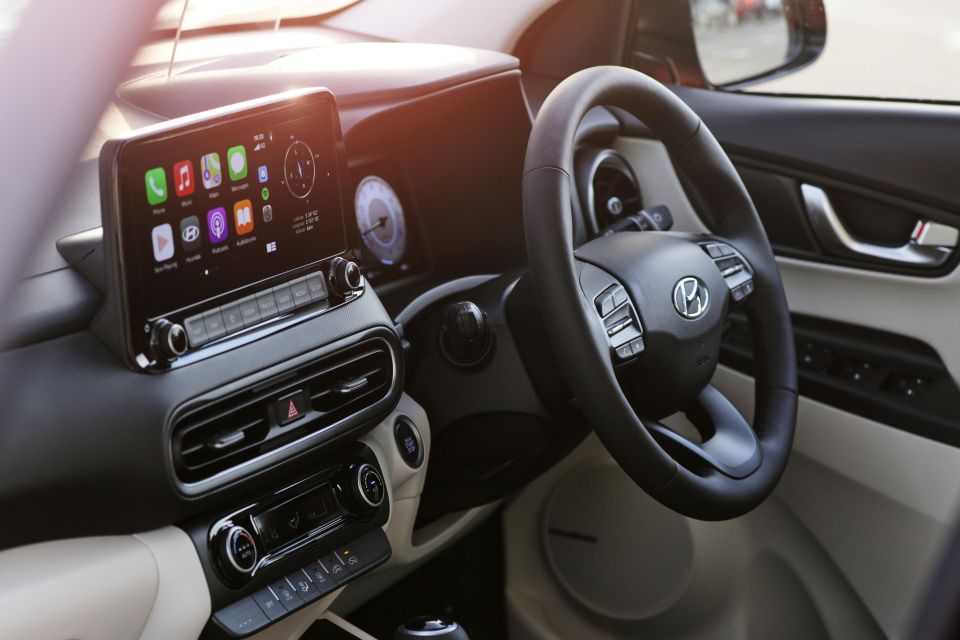
A 10.25-inch digital instrument cluster is available in the Highlander and N Line Premium, with other models featuring a 4.2-inch display screen.
All bar the Kona and Kona Active also have remote start and a new 10.25-inch touchscreen infotainment system with satellite navigation, though its Android Auto and Apple CarPlay is wired.
This unusual split in smartphone mirroring set-ups has also occurred with other recent Hyundai Motor Group products like the Hyundai Venue and Kia Carnival.
Kia Australia’s product planning head Roland Rivero has said it’s due to an issue with an unspecified tech giant.
“The tech giant is extremely insistent that unless their map is the default map, they won’t grant the licence. Until that matter is resolved, in fairness, from an R&D perspective, we’ve developed our own map and a lot of resources and money have been spent on developing an OEM map,” said Mr. Rivero.
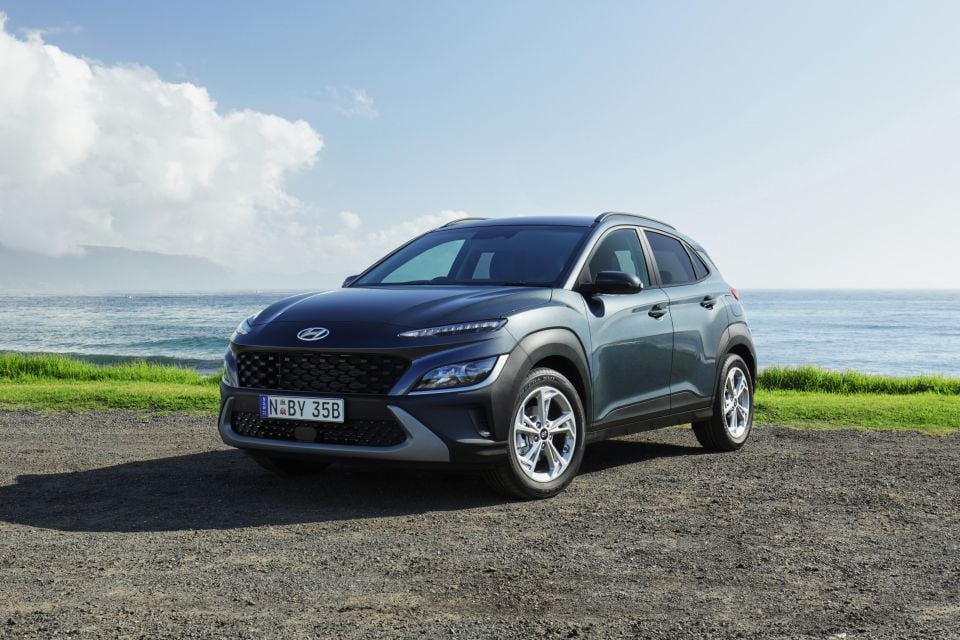

All prices exclude on-road costs.
Premium paint is a $595 option.
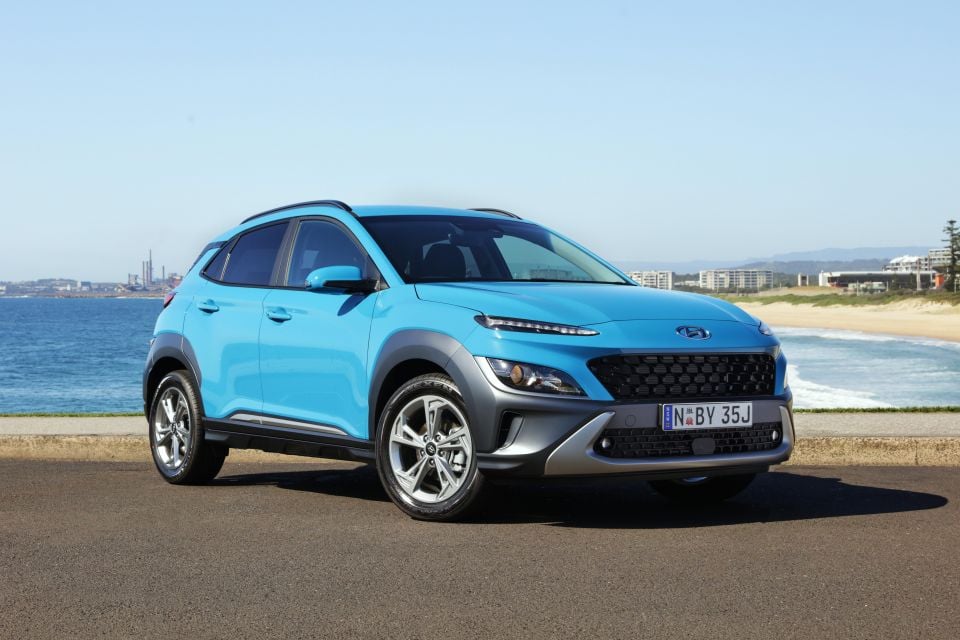
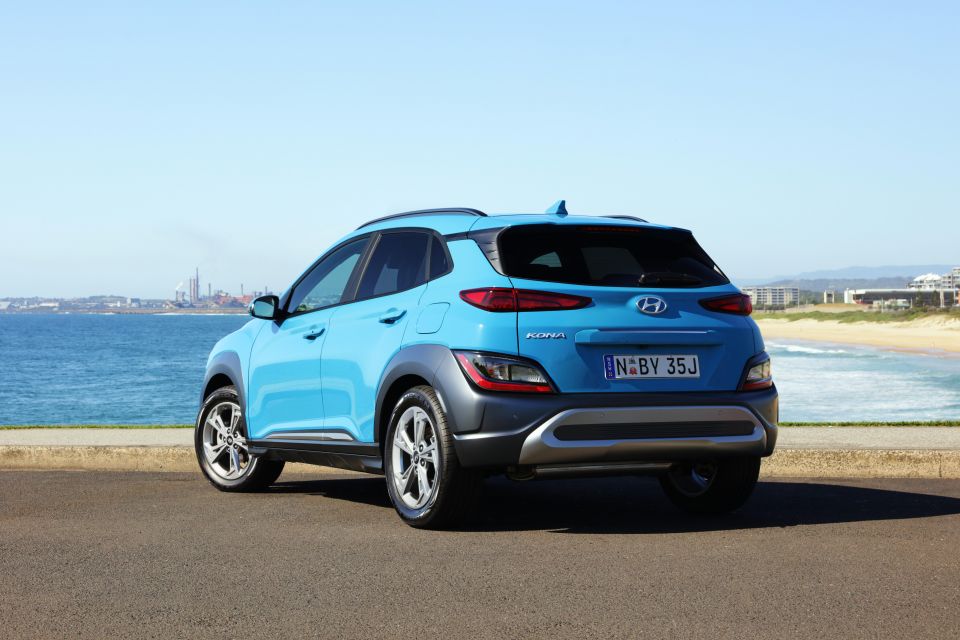
The 2021 Hyundai Kona is available with a choice of two engines.
The naturally-aspirated 2.0-litre four-cylinder engine produces 110kW of power and 180Nm of torque. It’s mated to a continuously-variable transmission and front-wheel drive.
The available turbocharged 1.6-litre four-cylinder engine produces 146kW of power and 265Nm of torque. It’s mated to a seven-speed dual-clutch automatic transmission and all-wheel drive.
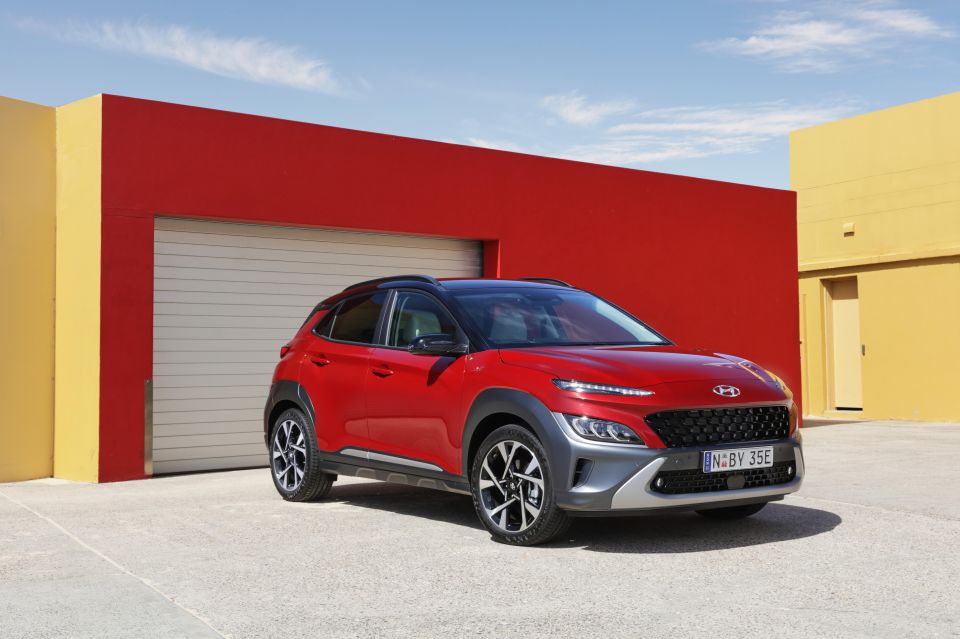
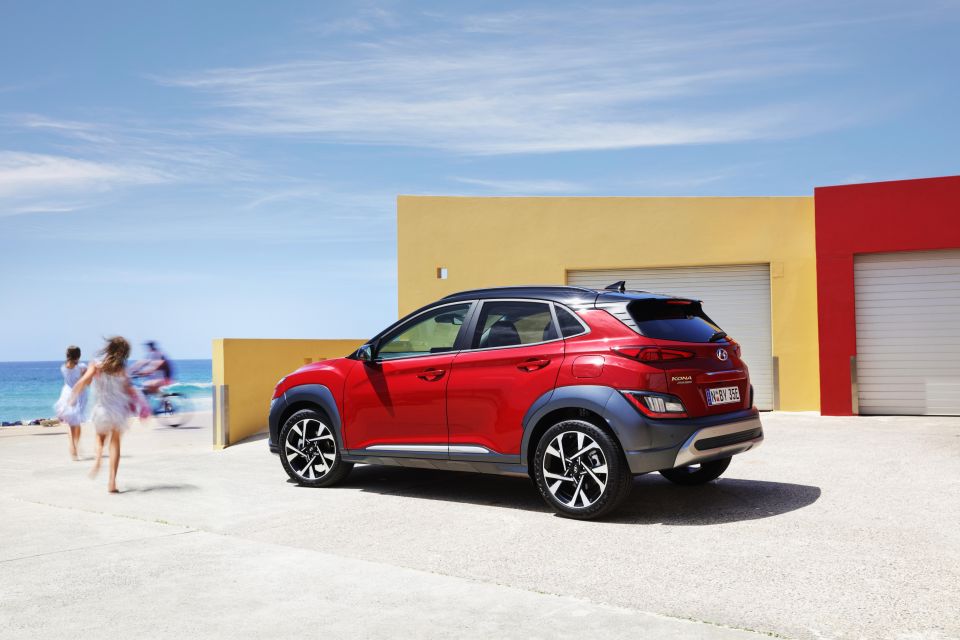
The 2021 Hyundai Kona consumes 6.2L/100km on the combined cycle in the 2.0-litre and 6.9L/100km in the 1.6-litre turbo.
All models run on 91RON regular unleaded fuel and have a 50L fuel tank.
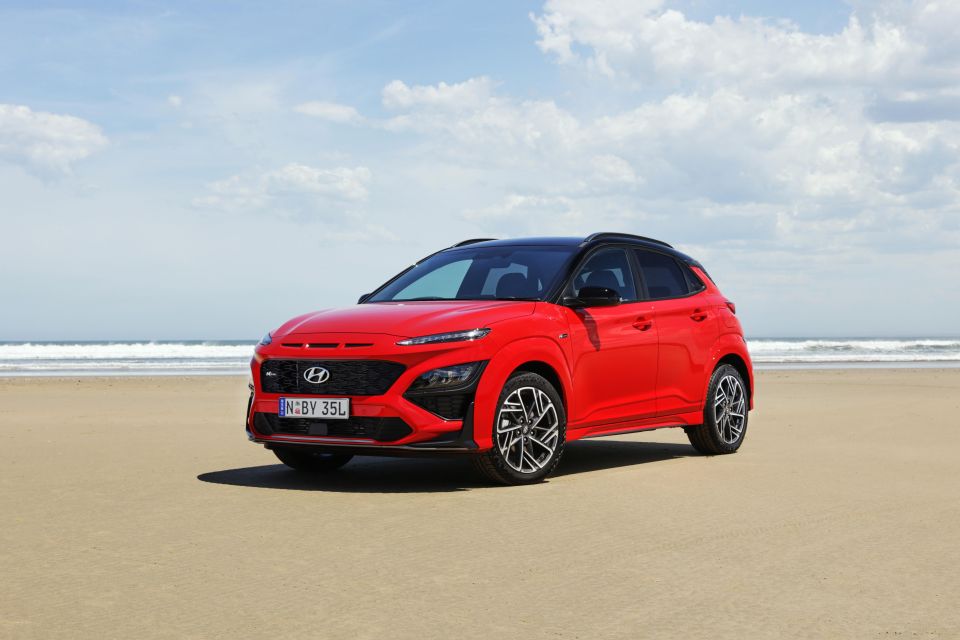
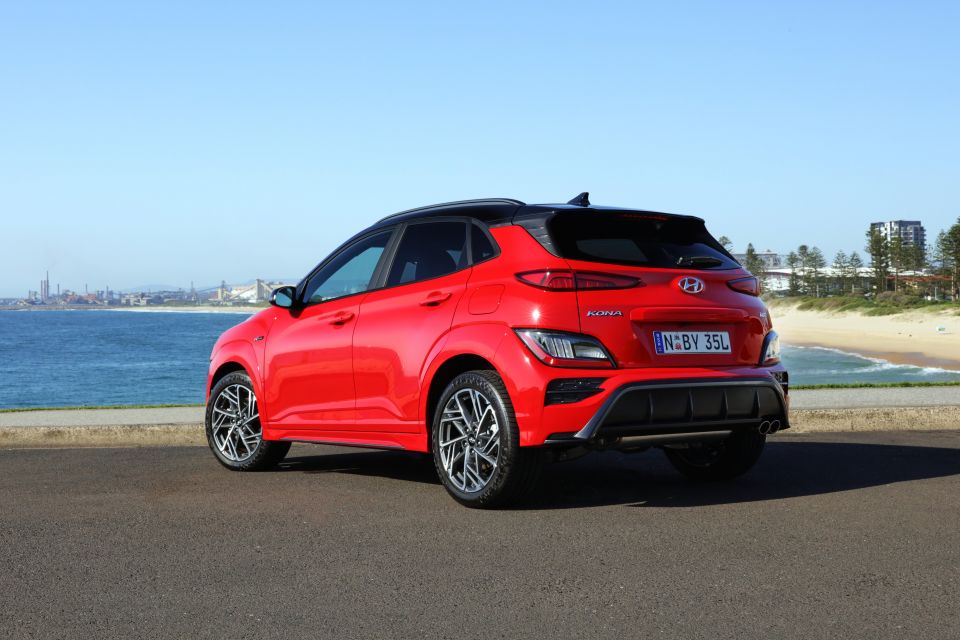
The 2021 Hyundai Kona measures 4205mm long and 1550mm tall, or 4215mm long and 1560mm tall in the N Line and N Line Premium. All models are 1800mm wide and have a 2600mm wheelbase.
Luggage space is 374L per the VDA standard, increasing to 1156 L with the rear seats folded.
Braked towing capacity is 1300kg for the 2.0-litre and 1250kg for the 1.6-litre, with unbraked being 600kg for both.
Kerb weight ranges from 1280kg to 1383kg in 2.0-litre models, and 1395kg to 1504kg in 1.6-litre models.
Hyundai has yet to confirm capped-price servicing costs for the 2021 Kona.
It’s covered by a five-year, unlimited-kilometre warranty, with services required every 12 months or 10,000km in the 1.6-litre and 12 months or 15,000km in the 2.0-litre.
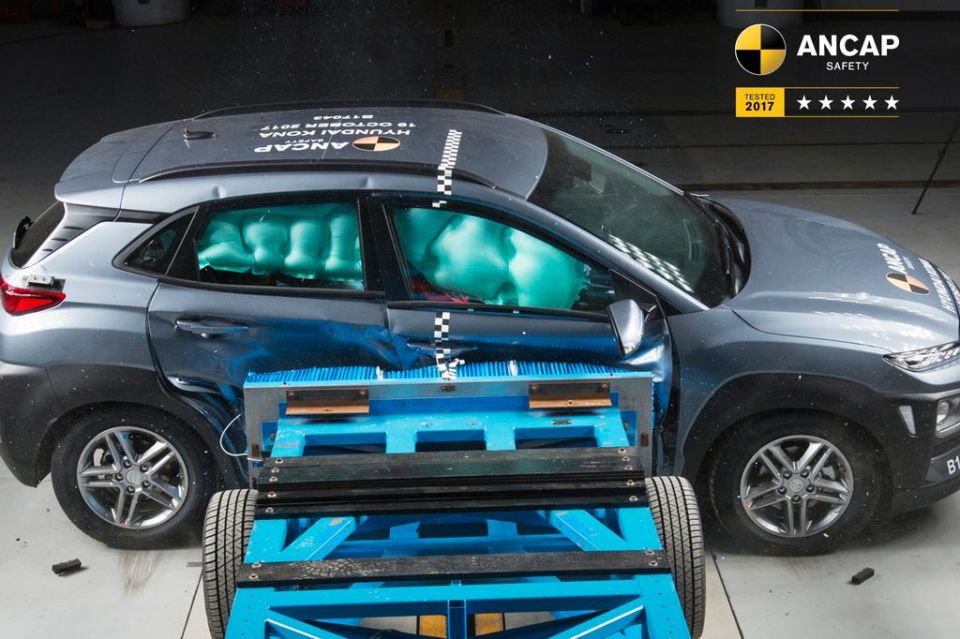

When the Hyundai Kona was tested by ANCAP in 2017, it received a rating of five stars.
That rating was based on a frontal offset score of 14.07 out of 16 and a side impact score of 16 out of 16. Whiplash and pedestrian protection were rated Good and Acceptable, respectively.
All 2021 Hyundai Kona models come standard with autonomous emergency braking with pedestrian and cyclist detection, lane-keeping assist, lane-following assist and front, front-side and curtain airbags.
Available higher up in the range are blind-spot assist, rear cross-traffic assist, and safe exit warning.
All Konas have three top-tether and two Isofix anchor points for child seats in the rear.

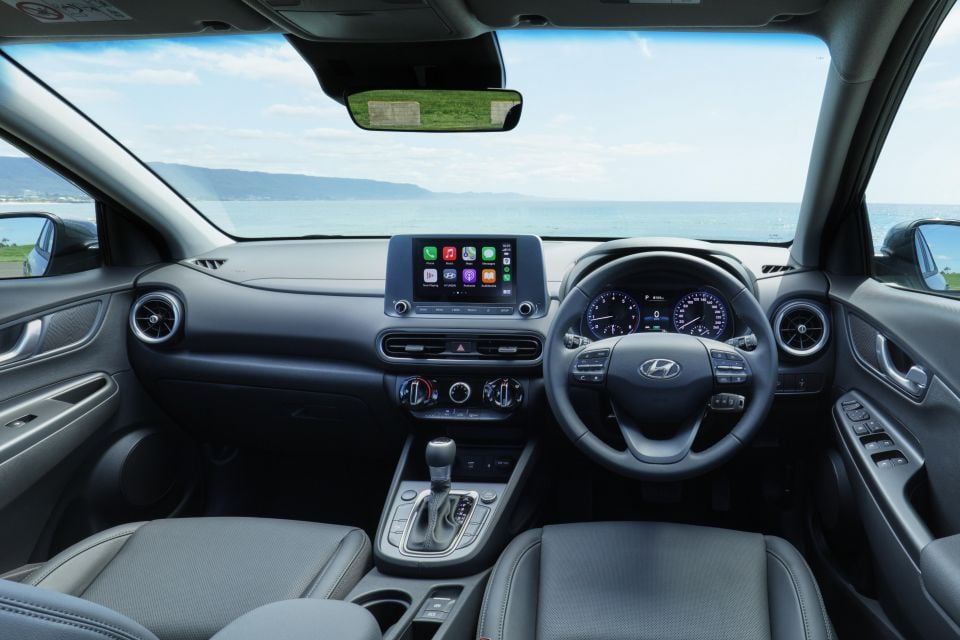
The base Kona comes standard with the following features:
The Active adds:
The Elite adds:
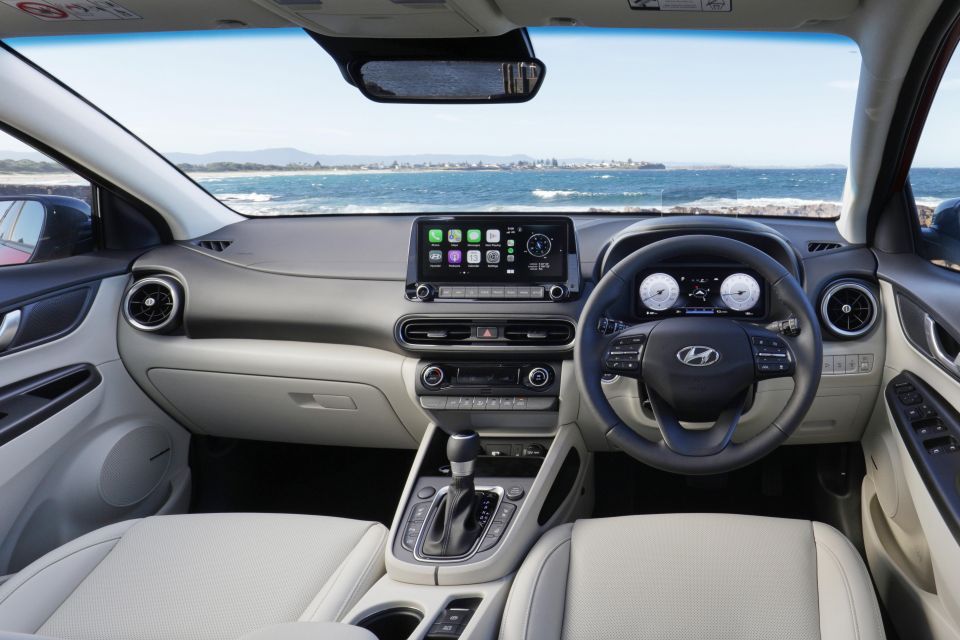
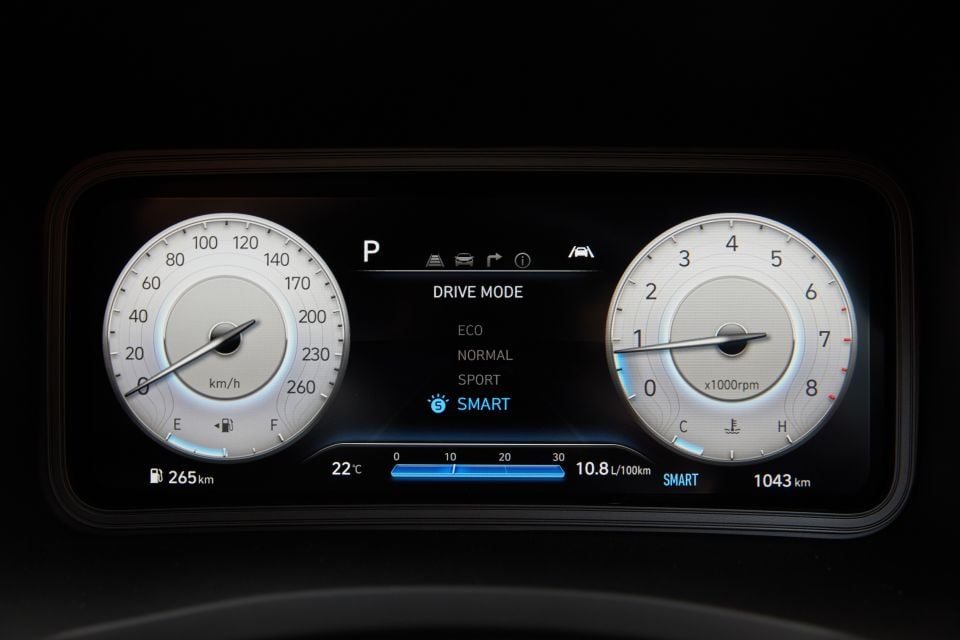
The Highlander adds:
A beige interior is available exclusively in the Highlander and costs $295.
The N Line drops back to the Elite’s spec level, but adds over it:
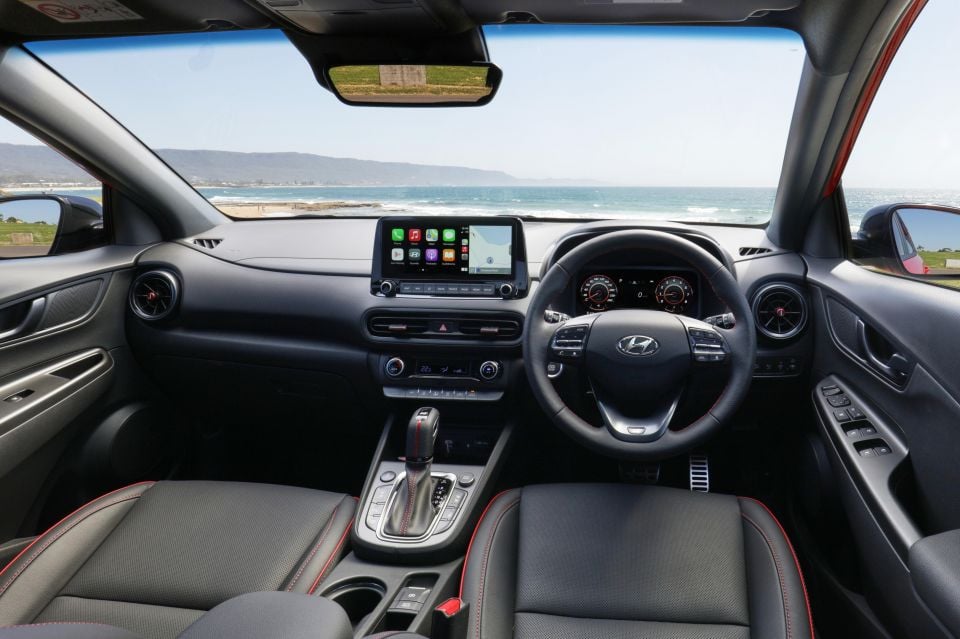

The N Line Premium adds:
A two-tone roof is available as a no-cost option on the Highlander and N Line Premium, though it deletes the standard sunroof.
MORE: Hyundai Kona news, reviews, comparisons and videos MORE: Everything Hyundai
Where expert car reviews meet expert car buying – CarExpert gives you trusted advice, personalised service and real savings on your next new car.
William Stopford is an automotive journalist with a passion for mainstream cars, automotive history and overseas auto markets.


Damion Smy
10 Hours Ago


Ben Zachariah
16 Hours Ago


Max Davies
16 Hours Ago
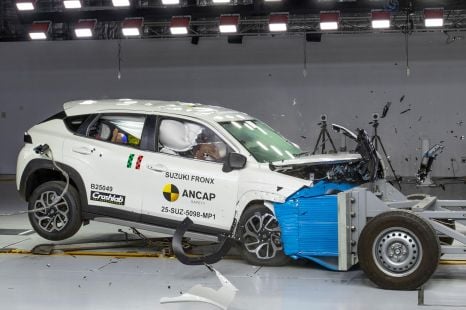

Damion Smy
1 Day Ago


Derek Fung
2 Days Ago


Max Davies
3 Days Ago